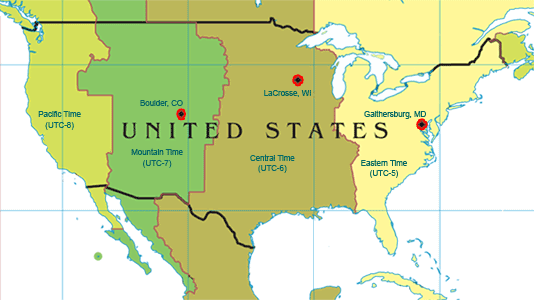|
|
|
|
The Current Readability of the WWVB Time Code
|
|
|
|
|

|
| Location | Time Zone | Readability (click to show graph) |
Last Update |
| Legend | |
|---|---|
| Location | The city and state where the signal strength meter is located. The receiving antennas are located indoors or outdoors (as noted) and pointed towards WWVB. A radio controlled clock located indoors at the same location will receive less signal and may be subjected to more interference. |
| Readability | The current readability of the signal. The WWVB time code is sent at the very slow rate of 1 bit per second. A complete time code contains 60 bits of information and requires a full minute to be sent. In order for a RCC to synchronize, it has to be able to successfully read and decode time code bits for at least a full minute, and many products require at least two complete time codes to be read before they display the received time.
Fluctuations in the signal strength, even if the signal is strong, might make it impossible for a RCC to successfully decode the time. Keep in mind that not all RCCs are created equal, some employ advanced digital signal processing techniques that will allow them to synchronize under conditions where other products will fail.
The readability rating displayed in this column was designed to estimate whether or not a RCC will be able to synchronize. Keep in mind that these ratings only apply if your RCC is located in the same region of the country as the signal strength meter. The current signal readability rating can have one of four different values: Most products only attempt to synchronize at night when the readability conditions are generally Excellent or Very Good in most parts of the continental United States. If you cannot get your RCC to work during the daytime hours, it will still probably synchronize if you let it run overnight. |
| Last Update | The date and time (UTC) when the information in this row of the table was last updated. The monitoring sites are scheduled to supply new data to NIST every 10 minutes. |
Questions? See our information page on radio-controlled clocks. Contact email: [email protected]
